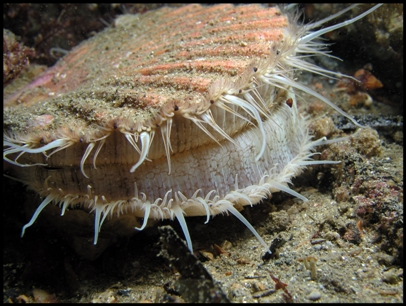M2M is predicated on the ability to monitor and measure physical, quantifiable parameters such as moisture, pressure, speed, movement, etc. Sensors provide the raw, analog data; they’re indispensable, but it’s easy to overlook this part of the value chain.
Those that measure pollution in the environment are normally sophisticated, electronic products, but when it comes to water, nature has given us an alternative biosensor.
Oysters and other mollusks such as clams and scallops obtain the nutrients they need from the water. The shells open in order to filter out the food particles, i.e. small algae, and at other times the bivalve (two-part) shell is closed. Scientists can use this behavior as an indicator of the quality of the water in which mollusks live.
When faced with pollution or poor quality water, the bivalve closes its shell. This can occur after exposure to very low levels of pollution, which means that these creatures can be employed as very-sensitive sensors.
Moreover, valuable information can also be gleaned from the size of the opening, movement speed and their biological rhythms. For example, the shell of a happy oyster will be closed for a few hours at very regular time periods. On the contrary, a stressed oyster will exhibit irregular and shorter closing periods.
It will also decrease the amplitude of the opening and also make numerous micro-closures.
Read on to see how M2M technology has been applied, but it is worth taking a trip to the site: http://molluscan-eye.epoc.u-bordeaux1.fr/. It comes up in French but you can switch to English. It’s beautifully illustrated and very informative.
The MolluSCAN Eye Project
The opening and closing behavior was recorded back in 1909 and has been studied under lab conditions for more than 40 years. But it needed Moore’s Law and the development of very small wireless modules before it could be studied in the field.

Eyes and lips exposed. This scallop is watching out for us. Image via François Cornu
In 2006 Dr. Jean-Charles Massabuau, research director in the CNRS working at the Université de Bordeaux, and a multi-disciplinary team initiated a large-scale project which started in Arcachon Bay in France. Since its inception, the project has evolved. In 2007, a program started in New Caledonia, southern Pacific. Then it was followed in 2010 by another one in Santander, northern Spain and in 2011 in northern Norway, in the fjord of Tromso.
In 2011, the team was in the Arctic, 1200 km from the North Pole, and now there is a last program in the Russian Arctic. Australia could be next. The objective is a 24/7 following of melting-induced changes on marine life by using a native Arctic inhabitant as a witness, the Icelandic scallop.
How it works
The project core is based on the activity of a team that comprised researchers and university professors. They are biologists, electronics specialists, mathematicians, and webmasters. The objective is to get information from a group of 16 mollusks left alone for months in the sea, set up such that they don’t know that they are being recorded. Ten measurements are taken every second 24/7 in order to generate enough data to rebuild their excited or relax behavior on computers.
To do this, light electromagnets (< 1 g each) are glued to each of their valves in order to measure the valve’s movements.
The solution comprises a card in a waterproof case next to the mollusks to acquire data and a second card out of the water to transmit the data. The whole thing is a ruggedized Linux microcomputer powered by batteries or solar panels. This allows the first card to work alone as a data logger.
Recently, reliability has been improved, a benefit of the experience gained from six years of ground work, sometimes in high seas or extreme cold. Mathematicians are really interested in this project because they are not only helping to protect the planet, but also because every field slave unit produces 864,000 triplets of data points a day, every day, thereby providing an exceptional data playground for those who love numbers.
The user-friendly website gives the results of field recordings from everywhere in the world. They are published daily.
The environment
Today, both the project and the approach are of interest to many scientists who see a tool for new questions in basic research, decision-makers who want to survey the environment and ecologists. For them, and everybody, a hot spot is clearly the Arctic, considering the velocity at which it is melting. In 2012, ice floe melting again broke records and made the newspapers.
One of the goals is to demonstrate that even in the cold and endless night of the polar environment the mature MolluSCAN Eye project can provide reliable information in places where humans cannot stay.
Dr. Jean-Charles Massabuau: “We know that we consume too much of our non-renewable resources, and we consume them badly. And our consumption of fossil fuel energy doesn’t stop rising. The goal of the MolluSCAN Eye is to help document these changes, to be a witness, and if possible to have a positive impact by enabling the widest possible sharing and exchange of information. A big challenge for the m2m market and…for all of us.”
Edited by
Braden Becker





